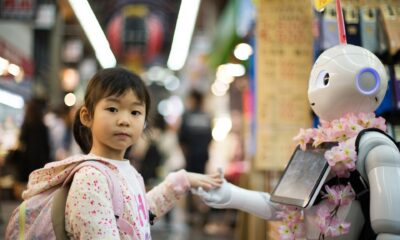Business
How to create infographics in 4 simple steps
Learning how to create infographics allows content producers to creatively portray ideas into eye-catching but clear and coherent designs.

A lot of businesses are employing the use of infographics to creatively portray ideas and thoughts into eye-catching designs. The creative use of elements like charts, colors, images, and graphs would translate to an entertaining and understandable story that a target market can understand.
But what makes it so effective? According to a blog post published by Hubspot, readers spend more time looking at photos than reading text on a page and that infographics are thrice more likely to be “liked” and “shared” on social media. In addition, infographics are an effective B2B tactic and have increased in use from 50 percent to 58 percent since 2016.
The why and how
Looking at a collection of numbers and text can be quite burdensome to the eyes. And with the rise of mobile gadget use, the human attention span has fallen from 12 seconds to just 8 seconds in 2010.

Learning how to create infographics is a valuable skill a content producer can have.(Source)
Companies and businesses are leveraging on this by data visualization and the use of infographics as a marketing tool to create a more interesting approach to any type of data. According to B2C, brains can process images up to 60,000 times faster compared to text and visuals help to make data easily absorbed. In addition to this, creating an infographic is easy as most of the data including statistics are easily available and can be collected through various means including the internet.
What’s great about creating an infographic is that you don’t need to be a pro designer to make one. All you need to do is be prepared with research and have an interesting story to tell that you can present creatively.
1. Gather the right information
Data is the backbone of any great infographic and behind this is having a clear idea of what you want to present. Trim any information that you don’t want to include and leave out the important ones that are relevant to your topic. Likewise, in the data-gathering process, already have a topic flow or outline in mind.
2. Know your target audience
Thinking about who your content wants to reach out to will play a huge role in the infographics’ shareability. Keep in mind that it has to gain traction, attention, and virality for it to become effective.

How to create infographics even when you’re a beginner.(Source)
3. Translate data into an infographic
In the infographic-making process, here is the part where you can get creative. Decide if you would like to use elements such as images, charts or graphs to translate your researched data. If you are adept at Adobe Illustrator, you can creatively use this program to create your infographic. Otherwise, there are a wealth of apps online that you can use to create an infographic such as Visme or Canva.
4. Invite your audience to share your infographic
In the final step of the infographic making process, don’t forget to add a call-to-action! This will direct your audience to where they need to go next. It can range from inviting them to sign up for a newsletter or have them recommend your infographic to a friend through social media. Moreover, giving credit where it is due is also important whether you have had help with surveys or citing sources that will make your data credible.

-

 Crypto3 days ago
Crypto3 days agoBitcoin in 2025: Mainstream Momentum, Price Weakness, and a Pivotal Year Ahead
-

 Fintech2 weeks ago
Fintech2 weeks agoN26 Hires UBS Executive to Lead Turnaround Amid Regulatory Pressure
-

 Biotech1 week ago
Biotech1 week agoCAR-T Therapies: From Breakthrough Cancer Treatment to Faster, Safer, and More Accessible Immunotherapy
-

 Fintech3 days ago
Fintech3 days agoPakistan’s Digital Finance Paradox: Growth, Fraud, and the Fight for Trust





















You must be logged in to post a comment Login